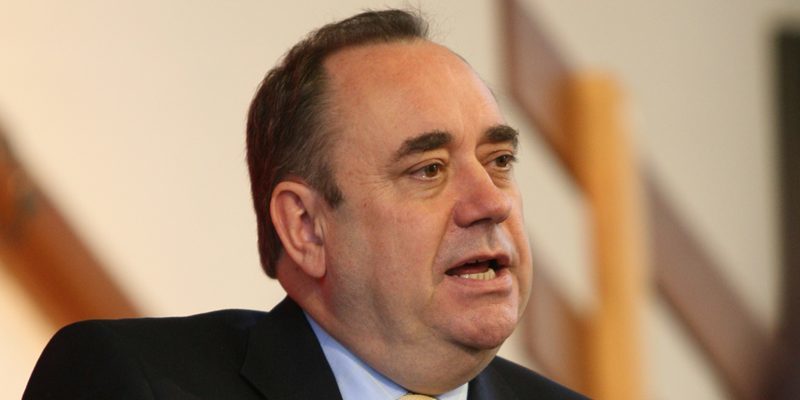First Minister Alex Salmond has apologised for misleading MSPs over a leading academic’s view on the independence referendum.
Mr Salmond had insisted Professor Matt Qvortrup had endorsed the SNP Government’s plan for a two-question referendum as ”fair, reasonable and clear”.
However, it emerged that phrase had actually come from Mr Salmond’s official spokesman and not Prof Qvortrup, who criticised the plans in The Times newspaper on Thursday.
The spokesman, Kevin Pringle, conceded in a press briefing that he had telephoned Professor Qvortrup that morning to clarify his position and thought he was writing another letter to the paper.
He added: ”If I said to the First Minister that that particular conversation I had with the professor was included in the letter, I take responsibility for that.”
The revelation infuriated opposition MSPs and led to an afternoon of demands for Mr Salmond to return to the chamber to apologise. It also provoked claims Mr Pringle had attempted to ”nobble” Professor Qvortrup to support the SNP position.
Returning to the chamber just before 5pm, Mr Salmond apologised.
”I gave a response to parliament at First Minister’s Questions today which I would now like to correct for this chamber,” he said. ”I believed that the words I used in response to Murdo Fraser were going to be included in a letter to The Times newspaper from Professor Matt Qvortrup.
”I now know that this was not the case and therefore I apologise to the chamber for my mistake. It was never my intention to mislead parliament. I wish to correct the record at this, the earliest opportunity.
”I was given a message shortly before I entered the chamber which was wrong and therefore my response was not correct. The responsibility for that is mine and mine alone, which is why I apologise to the chamber for the misinformation.”
Mr Salmond said he had since spoken with Professor Qvortrup.
He said: ”I now fully understand his position, which is that, if we wish, it is entirely feasible to hold a two-question referendum on Scotland’s constitutional future in a fair, reasonable and clear manner provided that certain conditions are met.”
Tory deputy leader Murdo Fraser described the apology as ”humiliating” and said the SNP were attempting to ”mislead, manipulate and manufacture evidence” over the referendum.
He added: ”More importantly, the First Minister and his SNP Government need to mend their ways and stop their bully boy tactics.”
Labour leader Iain Gray said: ”This grovelling apology from Alex Salmond prompts more questions than answers and casts light on the way he does business with those who disagree with him.”
Scottish Liberal Democrat leader Willie Rennie said the First Minister had been ”caught red-handed doctoring the evidence to suit his own interests.”
He added: ”Alex Salmond apologised with a smile on his face. Even now he doesn’t seem to grasp the severity of the case.”
Mr Salmond has suggested the referendum may also give voters the chance to keep Scotland in the UK, but with increased powers. This option dubbed ”devo-max” would give Scotland complete control over taxation and spending north of the border.
The proposal was criticised by opposition parties, with Mr Rennie accusing the SNP of election ”jiggery-pokery”.
The Times quoted Dr Qvortrup quoted as saying that a two-question referendum as laid out by the SNP is ”not feasible”. Dr Qvortrup later sent an email to media organisations and the First Minister’s office, remarking that his comments to the paper ”caused quite a bit of debate.”
He continued: ”So, just to set the record straight, I have the following to add. I am very content with the First Minister’s correction to parliament, which is a clear reflection of my views. And I am delighted to offer any assistance I can to ministers and MSPs regarding the referendum proposals.
”There is no doubt that a referendum offering two options for change is perfectly feasible providing that certain circumstances are met, and I look forward to discussing the detail of this with the First Minister and any other interested parties.”
A spokesman for Mr Salmond said: ”It is a very positive conclusion that Matt Qvortrup has agreed to advise the Scottish Government, and Parliament if it so wishes, on Scotland’s referendum. The important thing is the right of the people to choose Scotland’s future.”
